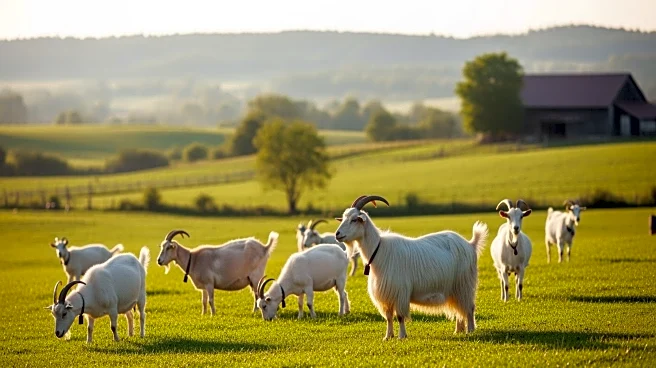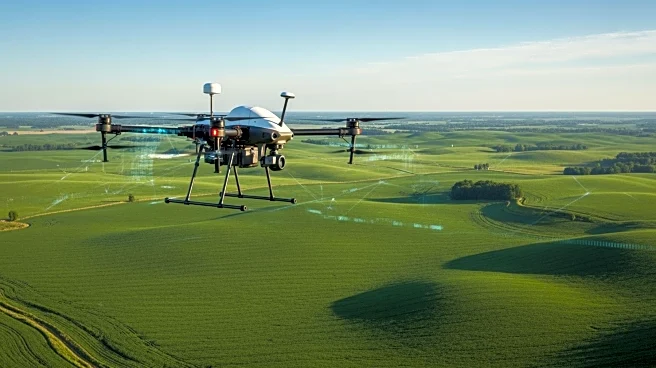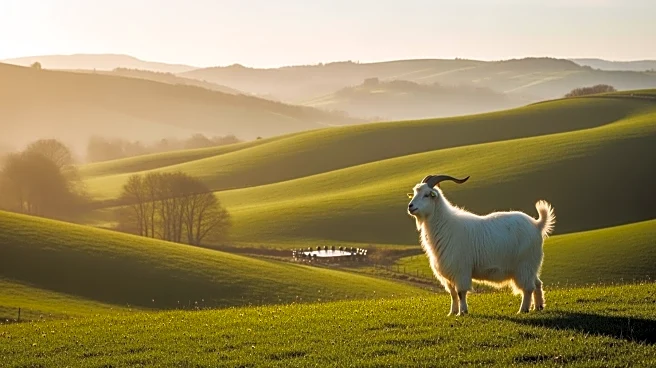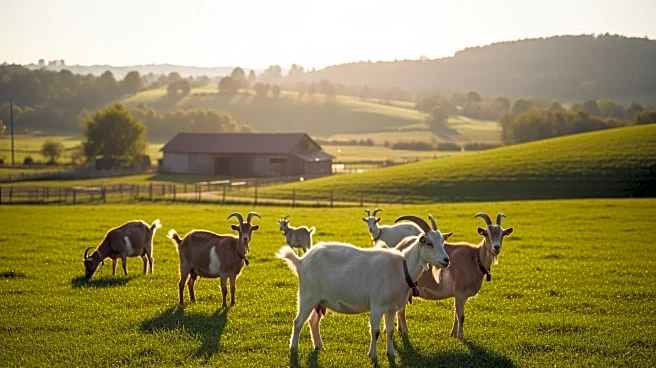What's Happening?
Beth Bohnert, a farmer in Tennessee, is raising goats specifically for cashmere production. Unlike specific breeds, cashmere is a type of goat characterized by its fine undercoat, which is highly valued for its softness and luxury. The cashmere fibers
must be under eighteen-and-a-half microns in diameter to meet industry standards. Bohnert collects the cashmere by brushing the goats annually, as opposed to shearing, which is common with sheep. It takes the annual yield of four goats to produce enough cashmere for a single adult sweater, highlighting the exclusivity and high cost of cashmere products. The goats' diet is carefully managed to maintain the quality of the cashmere, avoiding high protein intake that could coarsen the fibers.
Why It's Important?
The production of cashmere is significant due to its impact on the luxury apparel market. Cashmere's softness and rarity make it a sought-after material, driving high prices and demand in the fashion industry. This niche farming practice supports local economies and provides a sustainable livelihood for farmers like Bohnert. Additionally, the meticulous process of raising and maintaining cashmere goats underscores the importance of quality control in luxury goods production. The demand for cashmere also influences agricultural practices and market dynamics, as farmers must balance animal welfare with production efficiency.














